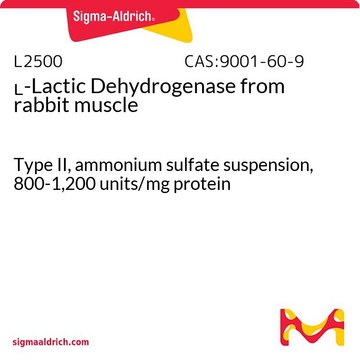M0505
Methylamine hydrochloride
≥98%
Synonym(s):
Methanaminium chloride, Methylamine monohydrochloride, Methylammonium chloride, Monomethylammonium chloride
Sign Into View Organizational & Contract Pricing
All Photos(3)
About This Item
Linear Formula:
CH3NH2 · HCl
CAS Number:
Molecular Weight:
67.52
Beilstein:
3588822
EC Number:
MDL number:
UNSPSC Code:
12352100
PubChem Substance ID:
NACRES:
NA.22
Recommended Products
Assay
≥98%
form
powder or crystals
bp
225-230 °C/15 mmHg (lit.)
mp
231-233 °C (lit.)
solubility
H2O: 1 g in 10 mL, clear, colorless
SMILES string
Cl[H].CN
InChI
1S/CH5N.ClH/c1-2;/h2H2,1H3;1H
InChI key
NQMRYBIKMRVZLB-UHFFFAOYSA-N
Looking for similar products? Visit Product Comparison Guide
General description
Methylamine hydrochloride is used as a buildingblock for the synthesis of various organic compounds.
Application
Methylamine hydrochloride can be used as a reactant to synthesize:
- Betahistine via aza-Michael reaction with 2-vinylpyridine in water.
- Azatripyrrolic and azatetrapyrrolic macrocycles by reacting with pyrrole and formaldehyde via base-catalyzed Mannich reaction.
- Tetrahydropyridines via Aza-Diels–Alder reaction with dienes and aldehydes.
- N-methylsecondary arylamines from aryl chlorides via nickel-catalyzed amination reaction.
related product
Signal Word
Warning
Hazard Statements
Precautionary Statements
Hazard Classifications
Acute Tox. 4 Oral
Storage Class Code
11 - Combustible Solids
WGK
WGK 1
Flash Point(F)
408.7 °F - closed cup
Flash Point(C)
209.3 °C - closed cup
Personal Protective Equipment
dust mask type N95 (US), Eyeshields, Gloves
Choose from one of the most recent versions:
Already Own This Product?
Find documentation for the products that you have recently purchased in the Document Library.
Marco Dionisio et al.
Journal of the American Chemical Society, 134(15), 6540-6543 (2012-04-06)
Single-walled carbon nanotubes (SWCNTs) have been functionalized with highly selective tetraphosphonate cavitand receptors. The binding of charged N-methylammonium species to the functionalized SWCNTs was analyzed by X-ray photoelectron spectroscopy and confirmed by (31)P MAS NMR spectroscopy. The cavitand-functionalized SWCNTs were
Elisabeth Schwaiger et al.
Transplantation, 97(12), 1279-1285 (2014-03-14)
Luminex-based anti-HLA IgG detection on single-antigen flow beads (SAFB) represents a valuable tool for characterization of allosensitization patterns. Assay interpretation, however, may be impeded by false-low test results caused by the prozone effect. Recent experimental data have related this artifact
Jing-Jing Fang et al.
Waste management (New York, N.Y.), 32(7), 1401-1410 (2012-04-07)
This study investigated the odor compounds from different areas in a landfill site, which included the municipal solid waste (MSW)-related area, the leachate-related area and the sludge-related area. Nine sampling points were placed and 35 types of odorous substances were
Nicolas Fleury-Brégeot et al.
Chemistry (Weinheim an der Bergstrasse, Germany), 18(31), 9564-9570 (2012-07-07)
Ammoniomethyl trifluoroborates are very powerful reagents that can be used to access biologically relevant aryl- and heteroaryl-methylamine motifs via Suzuki-Miyaura cross-couplings. Until now, this method was limited to the production of tertiary and primary amines. The synthesis of a large
Raymond J Ritchie
Microbial ecology, 65(1), 180-196 (2012-09-04)
Ammonia is the preferred nitrogen source for many algae including the cyanobacterium Synechococcus elongatis (Synechococcus R-2; PCC 7942). Modelling ammonia uptake by cells is not straightforward because it exists in solution as NH(3) and NH (4) (+) . NH(3) is
Our team of scientists has experience in all areas of research including Life Science, Material Science, Chemical Synthesis, Chromatography, Analytical and many others.
Contact Technical Service







